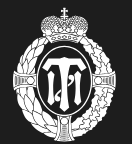Introduction to Saint Petersburg State Institute of Technology
Saint Petersburg State University of Technology, also known as Peter the Great Saint Petersburg Polytechnic University, is a comprehensive university in Russia focusing on science and engineering. It is located in Saint Petersburg and is a strategic partner university of Tsinghua University.
Overview
Student size: There are about 18,000 domestic students and 1,500 foreign students at the main campus.
Faculty: The school has 82 academicians of the Academy of Sciences or the Academy of Engineering, 400 professors, and 1,500 associate professors.
History and establishment time
The school was founded on November 28, 1828, and its history can be traced back to an earlier period, when it was just a few years before the reign of Emperor Nicholas I. It was renamed several times during its development. In 1896, it was renamed St. Petersburg State Institute of Technology. In 1899, it was renamed "Peter the Great Imperial Polytechnic Institute". In the Soviet period, it was renamed Kalinin Polytechnic Institute. After the disintegration of the Soviet Union, it was renamed St. Petersburg State University of Technology. In 2015, it was renamed St. Petersburg Polytechnic University again.
School Strength
Teaching Achievements: As one of the most comprehensive universities in Russia with a long history of science and engineering, the school has trained many Nobel Prize winners and a large number of high-level engineering and economic professionals for Russia and other countries in the world. Its graduates play an important role in science, industry, economy and other fields.
Scientific Research Strength: The school has more than 20 academicians of the Academy of Sciences and Nobel Prize winners, and has built more than 20 international project development research centers. It has played a pivotal role in the world in the same field in water conservancy, welding, theoretical and applied mechanics, automation management, energy and electronic networks. In recent years, on the basis of strengthening the original teaching, the school has added humanities majors, including economics and management, and has established extensive cooperation in scientific research and teaching with France, Germany, South Korea, Japan, Finland, Algeria, Norway, China and other countries, and continuously expanded the scope of scientific research and international cooperation.
International Cooperation: The school has established equal cooperation relations with nearly 100 famous universities in dozens of countries in the world. It is an important organizer of the Russian Federation of Technical Universities, and a member of many international organizations such as the International University Association, the Netherlands International Education Cooperation Organization, and the St. Petersburg University Alliance. The school actively carries out international exchange activities, and carries out student exchange, teacher exchange, scientific research cooperation and other projects with many foreign universities, which enhances the school's international influence.
Nature of the institution
Public comprehensive university.
Educational philosophy
Focus on transforming theoretical knowledge into practical experience, emphasize the cultivation of students' practical ability and innovative spirit, so that students can work in modern industry or conduct research in various scientific fields. The school is equipped with the latest teaching equipment, excellent teaching staff and practical teaching links to provide students with high-quality education and lay a solid foundation for their future career development and scientific research.
Key laboratories and disciplines
Key laboratories: The school has 120 laboratories, providing good scientific research conditions for students and researchers.
Key disciplines: Chemistry, chemical technology, and engineering are the traditional advantageous disciplines of the school. The school has cultivated a large number of outstanding talents in these fields and achieved many scientific research results. It is one of the world's famous centers for chemistry, chemical technology and engineering. In addition, disciplines such as mechanical engineering, power engineering, energy engineering, materials technology, physical science, medical physics and bioengineering also have a high level and influence.
Faculty
The school has 18 departments and schools, including the School of International Education, the Department of Civil Engineering, the Department of Power Engineering, the Department of Energy Engineering, the Department of Mechanical Engineering, the Department of Physics and Mechanical Engineering, the Department of Materials Technology and Research, the Department of Economics and Management, the Department of Control Technology, the Department of Radio Physics Science and Engineering, the Department of Physical Science and Engineering, the Department of Medical Physics and Bioengineering, the Department of Radio Electronic Engineering, the Russian American Management Graduate School, the School of Intellectual Systems and Manufacturing Technology, the Center for Scientific Enhanced Engineers, the National Russian Science Center, etc.
Ranking
In the 2023 Times Higher Education World University Rankings, the school ranked 3rd in Russia; in the QS World University Rankings, it ranked 382nd.
Expenses
Preparatory: Tuition fee 14,000 yuan/year.
Undergraduate: Tuition fee 14,000 yuan - 18,000 yuan/year.
Master: Tuition fee 14,000 yuan - 20,000 yuan/year.
Doctoral: Tuition fee 14,000 yuan - 20,000 yuan/year.
Campus
Teaching facilities: The school's laboratories are equipped with the latest equipment, providing strong support for students' practical teaching and scientific research. The school library has four reading rooms and one special science and technology reading room, with a collection of more than 1 million books; the school's history museum preserves more than 11,000 collections. In addition, the school also has a gymnasium equipped with fitness equipment and corresponding equipment.
Living facilities: The nine-story building where the International Education College is located has classrooms, laboratories, libraries, student dormitories and canteens. The student dormitories are generally three people per room, with kitchens and bathrooms, each person has a bed, a large wardrobe and a table, and sheets, pillows, quilts and mattresses are provided by the school and changed every 3-7 days.
-

Peter the Great St.Petersburg Polytechnic University
-
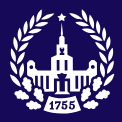
Moscow State University M. V. Lomonosov
-
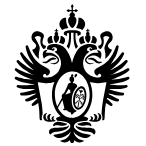
St. Petersburg State University
-
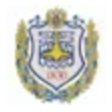
Bauman Moscow State Technical University
-

Tomsk State University
-
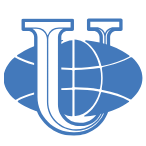
Peoples' Friendship University of Russia
-
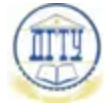
Don State Technical University
-

Moscow Institute of Physics and Technology
-
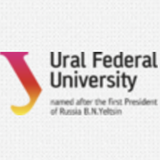
Ural Federal University
-

Kazan Federal University
-

Mesoamerican University
-

Istmo University
-

Mariano Galvez University of Guatemala
-

Regional University of Guatemala
-

Galileo University
-

Francisco Marroquín University
-

Rafael Landívar University
-

University of the Valley of Guatemala
-

University of San Carlos of Guatemala
-

Technological Institute of Tlaxcala Plateau
-

Golfo University
-

Technological University of South Sonora
-

Technological University of Huejotzingo
-

Tizimín Institute of Technology
-

Chilpancingo Institute of Technology

